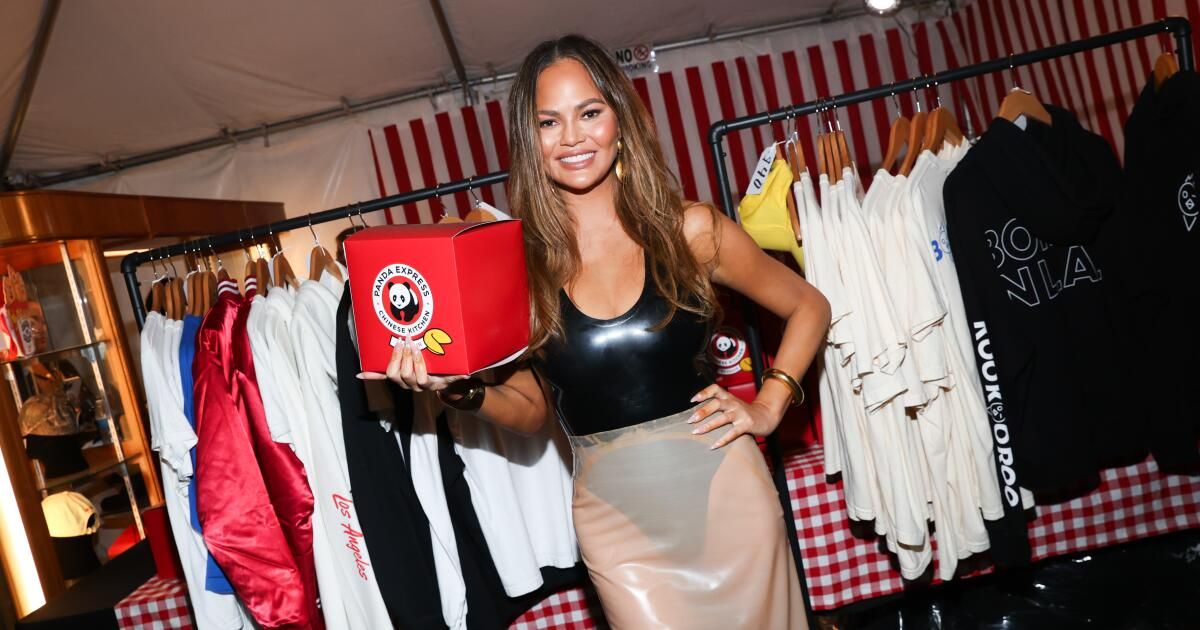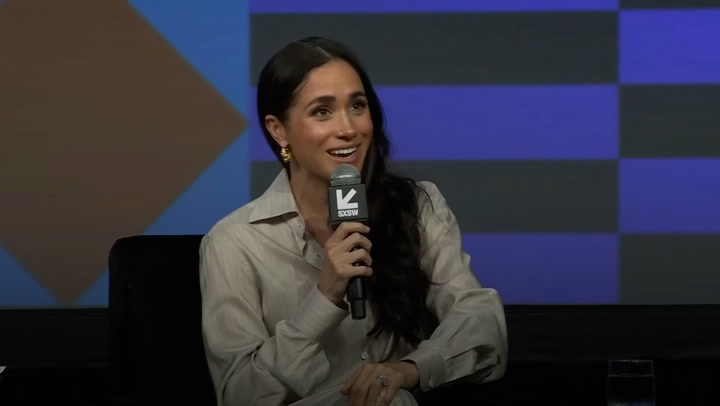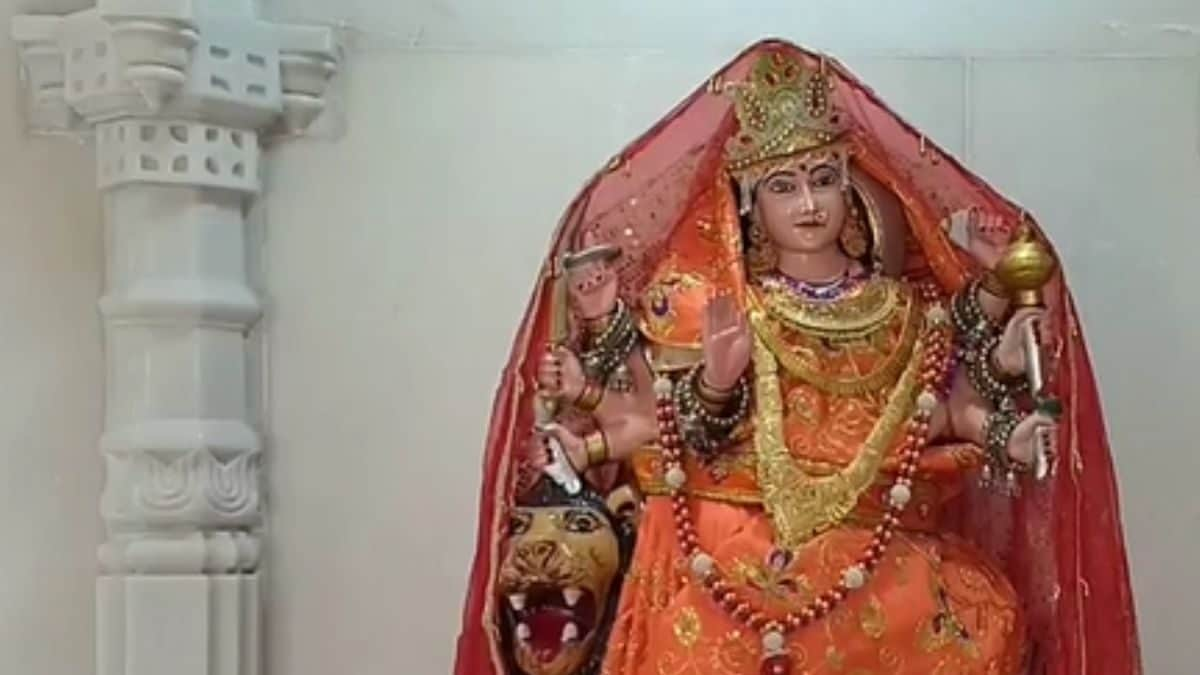Hollywood's upper-class elites have found a new way to show they're out of touch. And I fell into it.
Chain, a recent social media darling and beneficiary of articles telling of its nostalgia-fueled good times, promises connoisseurs somewhat exclusive access to the latest creations from celebrity chefs, specifically those from the late great Tim Hollingsworth Otium. . The hook: The food is themed around dishes found at popular franchise-focused restaurants, only this is fast food reinvented.
Chain is designed to rekindle memories in a way that excites your now sophisticated taste buds. At previous events, you can try an elevated appetizer inspired by Blooming Onion, an elevated Taco Bell plate with Wagyu beef, or a Pizza Hut-style pizza with Vacche Rosse Parmigiano aged for 24 months, all with the help of a Michelin-starred chef. .
At a chain event, which has taken place in New York and Los Angeles, and often at one-off pop-ups at its bustling Virgil Village headquarters, you enter a fantasy world where fast food is haute cuisine. The food of the common person (the meals that are devoured when everyone is too tired to cook, money is tight, or the children simply need to be appeased) is, in reality, the food of the elite.
For the Chain, fast food is marketed as a unifying element, a bridge between classes, as long as you sign up to receive a text message notifying you of its next not-so-secret event and rush to buy tickets. (And a chain event isn't cheap: I recently objected to a pizza night that went over $100.)
I admit, I was attracted to Chain. I have fond memories of nights working on the high school newspaper, when we debated who would work at McDonald's. Plus, I live within walking distance of Otium, a special occasion spot that I found plenty of excuses to visit (does stress count as a special occasion?). And just as the first season of “The Bear” documented how you can make a better Italian beef, I trusted Chain to craft a superior hot dog.
Chain doesn't know what he's nostalgic for. Low-quality foods rich in fat and fat? Companies that traffic in minimum wage jobs?
—Todd Martens
That's why I bought a ticket to last weekend's ChainFest, Chain's big festival. It was a failure, an awkward gathering of junk food spread across scorching patches of asphalt. The event failed so drastically in its understanding of food culture that it essentially mocked the lower class. It's the rich and their influential friends disguised as commoners who eat fast food not because it's the only restaurant available in a neighborhood's food desert, but because, hey, White Castle is good, actually. Surprise, it's not.
This should have been a celebration for the company, which recently received some glowing press when the BJ Novak-founded operation hired Chrissy Teigen as an advisor. Chain also boasts that its partnership with companies like Hollingsworth ensures that only the highest quality food ingredients are used.
That was not evident on Saturday. Held at Row DTLA, a shopping and retail complex in downtown Los Angeles, ChainFest was an embarrassment, a marketing sham disguised as a nostalgia party. A sample text from a friend: “I should have eaten my money instead of this mediocre meal.”
ChainFest held two events on Saturday, a daytime gathering and an evening focused on friends and VIPs. ChainFest offered small bites of food inspired by popular franchises.
(Rodin Eckenroth/Getty Images)
I agree that cash would have tasted better than literally anything to try at ChainFest. I knew I had made a mistake as soon as I walked in. It was clear I wouldn't get the value of my $109 general admission ticket (VIP deals were over $300).
The Instagram chain had been presented in a colorful map, similar to that of Disneyland: a tiki drink here, a new version of Domino's pizza there, an artistic interpretation of Panda Express up ahead and a resurrection of Koo Koo Roo in the VIP area . but what greeted me were tacky, out-of-the-box signs leading to food stalls where disinterested workers juggled half-open cardboard boxes of food. It was a cheap, rude and cruel place, where food was considered disposable. As in many of the Chain's Champion restaurants.
And then we realized this: Chain doesn't know what he's nostalgic for. Low-quality foods rich in fat and fat? Companies that traffic in minimum wage jobs? After all, it was the fast food companies (some of which have been supported at previous Chain events) that spoke out against California Assembly Bill 1228, which sought to raise the wages of their employees. who were barely surviving.
The romance of fast food is not an anomaly in these parts. Southern California is arguably the birthplace of modern chain restaurants (after all, this is where McDonald's started), but what was once a cheap diner dedicated to a car-based self-service culture today Nowadays it is generally associated with poor ingredients. low wages, obesity, and the type of restaurants that populate low-income neighborhoods.
While I understand the appeal of an In-N-Out burger every now and then, Chain seeks to beautify the type of food that much of the population depends on, not by choice but by necessity. Instead of using their resources for good (to, for example, reimagine comfort food as not only affordable but also creative dishes made with fresh ingredients), Novak, Teigen and Hollingsworth at ChainFest chose to glorify companies like Panda Express, Cracker Barrel, White. Castle, Domino's and more.
Maybe they can do fast fashion or big oil next?
There has been no shortage of renowned chefs trying to tackle everyday foods. Our own city has been in the midst of a pizza renaissance that has lasted more than a decade since Nancy Silverton launched Pizzeria Mozza. My favorite restaurant, Little Goat Diner in Chicago, is Stephanie Izard's reinvention of the casual hangout, where a menu of crispy chili burgers, crab-enhanced cheese dip, and peanut butter-bacon pancakes usually costs less than $ 20 per item. It's also proof that you can make high-quality food without going anywhere near Johnny Rockets.
I was expecting a similar style from ChainFest. What I got was an exhibit dedicated to small bites of food chain staples. The White Castle slider was, for all intents and purposes, a White Castle slider. Sure, it came with a “Chain Castle Crave” sauce, but there wasn't much difference between this and the frozen White Castle burgers I ate in college. Except the latter didn't have a $100 entry fee.
While social media opinions on ChainFest were mixed, many, like local digital creator Luis Marín, had a less than positive experience:
Kentucky Fried Chicken's mini waffles and chicken strips were my next stop. We were told this was a revival of a previous recipe, but the chicken was a mass of fat with the consistency of paper. Chain created multiple sauces to accompany them, but these little bombs of dryness needed more than a drizzle of dressing to become edible. I tried to wash it down with a $20 Trader Vic's tropical rum drink, but it was all ice melted with water.
I passed by Portillo's with enthusiasm. A Chicago native, I admit I have fond memories of post-Little League Italian hot dogs and steak sandwiches, and I've made a pilgrimage to Buena Park to try the Southern California outpost. But here? Forget it. A tiny dog filled with chips that obscured any flavor and overpowered the texture. A bite and a half and all I was left with was a bunch of condiments.
I also thought about recent news about fast-food companies and their workers: the efforts of some food preparation employees at Portillo's to unionize, and a report last year, documented in The Times, that found that “fast-food companies current and recent workers…represent 11% of all homeless workers in California.”
But that's the crux of the problem. None of those involved, if Saturday is anything to go by, have shown any desire to think critically. Does Chain want to make a statement about the restaurants it advertises? And can you do it while also marketing them, as you did by helping Panda Express launch a spicy chicken product?
As I thought about leaving Chain (there was a McDonald's down the street and a Pane Bianco inside the Row, both of which were cheaper and would have offered better experiences, one upscale and one low), I put on my headphones and queued up the song from the Pulp anthem. “Common people.” It's a rant against the worst kind of rich, those who fetishize the working class to please them. “You think being poor is cool,” Jarvis Cocker taunts in the tune.

ChainFest is a celebration of all things franchise food, including photo opportunities with fast-casual mascots like Red from Red Robin.
(Rodin Eckenroth/Getty Images)
And ultimately, ChainFest felt cynically opportunistic. According to their official websites, there are about 20 Panda Express outposts in Los Angeles, and at least that many Domino's within a short drive of my house.
So why exactly does this company exist? Chain's team seemed outmatched in their signature event. Instead of reinventing Panda Express, we remember why Panda Express is the last resort.
At a Chain event, you are buying more than a dish. You're buying into a myth, albeit a tempting one, that the restaurant chains that are so ubiquitous across the country are actually good for us, the real heroes of the American food industry. As I looked at Domino's admittedly lively slice of smoked salmon, I couldn't help but wish it had a more appealing base than the franchise's heavy, chewy crust. All of this left me with a bad taste in my mouth.












